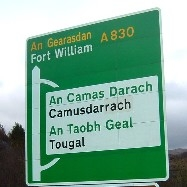Language

Scotland’s multiple linguistic heritage is one of its most distinctive cultural features.
The official language is English, which is spoken by the vast majority of the population, but Lowland Scots - a variant from the same Teutonic root as English which parted company with its dominant neighbour during the early Middle Ages - is also widespread and arguably dominant. A lively debate continues as to whether Scots (or Lallans, as its is sometimes known) should be classified as a language or a dialect, and authors writing in various forms of Scots have played a key role in Scotland’s recent literary renaissance.
Further examples of regional vernacular abound in Scots, including Doric, spoken in the north-east, and the dialects of Shetland and Orkney, which reveal a strong Norse influence.
Languages such as Urdu, Punjabi and Cantonese have latterly been added to the mix by some of Scotland’s main immigrant-derived communities, with central and local government bodies adapting their communications policies to meet the diverse contemporary needs of the Scottish population.







 Scotland’s multiple linguistic heritage is one of its most distinctive cultural features.
Scotland’s multiple linguistic heritage is one of its most distinctive cultural features.